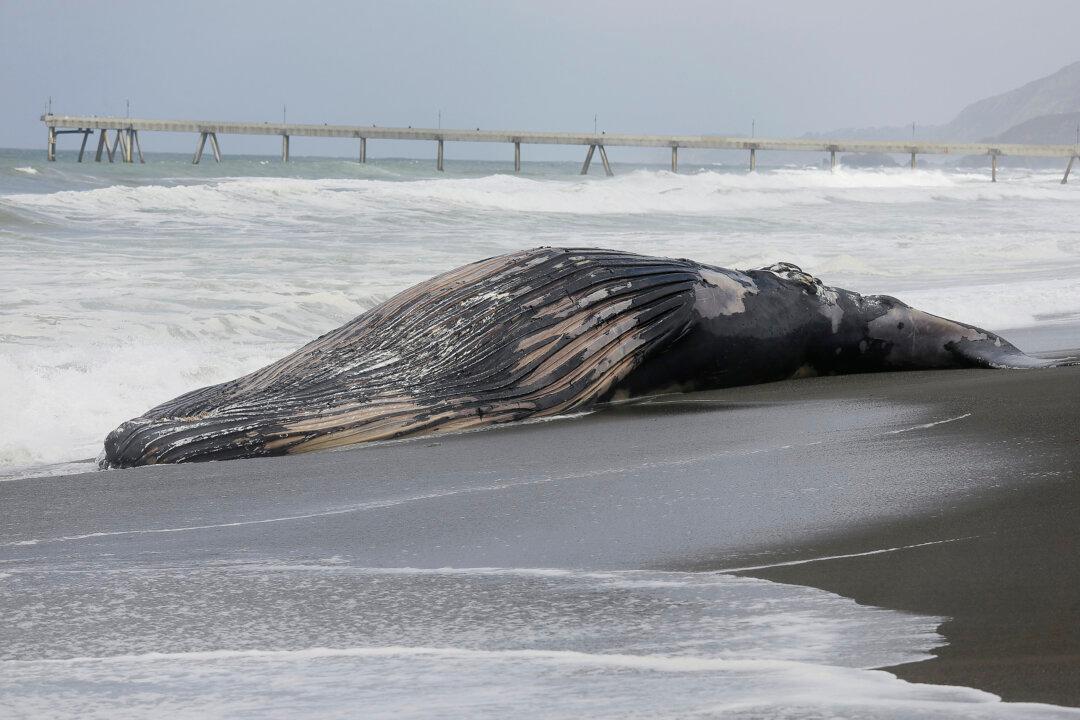An 18-meter-long sperm whale died after becoming stranded for a second time on a beach in Bali Island, Indonesia, despite having been pushed back into the sea by locals and authorities, according to local reports.
The whale was first spotted stranded on Lepang Beach in Bali’s Klungkung regency at 4:30 a.m. local time on April 5, with wounds on its body. Locals and officials tried to save the whale by pushing it back to the sea.





